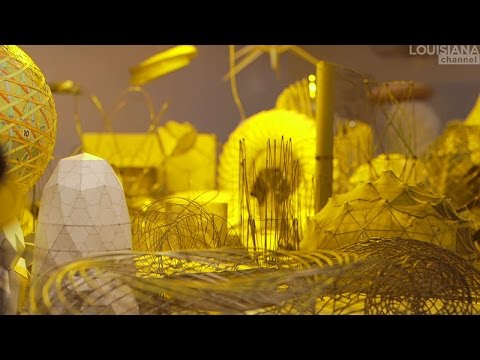
The space that ideas stem from is similar to a treasure room, according to artist Olafur Eliasson, who here discusses his remarkable art installation ‘Model Room’.
A beginning has the shape of an idea, and before the idea is something one might call intuition or something that is ‘felt’: “It’s meaningful but it has no words,” Elisasson says. Adding words to an idea, therefore, can sometimes be counterproductive and makes the idea more pragmatic as it has to be explained: “Intuition is always a flow, it’s like a little poem of something which has not yet come to verbalization.”
This is why Eliasson or people from his team, among these mathematician Einar Thorsteinn, make models, because these “small spatial experiments” help him realize whether the actual work of art is as good as the idea it is derived from. The extraordinary table, which is his art installation ‘Model Room’, is thus about the relationship between thinking and doing and about “celebrating the area around where things start – the ideas.”
Olafur Eliasson (b. 1967) works with sculpture, painting, photography, film and installations. He grew up in Iceland and Denmark and studied at the Royal Danish Academy of Fine arts from 1989-1995. In 1995 he moved to Berlin where he founded Studio Olafur Eliasson. Eliasson is behind many major exhibitions and projects around the world, such as ‘The Weather Project’ at Tate Modern’s Turbine Hall in 2003, ‘Take Your Time: Olafur Eliasson’ organized by SFMOMA in 2007, which travelled until 2010 to major venues such the Museum of Modern Art, New York, and ‘Riverbed’ at Louisiana Museum of Modern Art, Denmark in 2014. Among Eliasson’s projects in public space are ‘Green River’, carried out in various cities from 1998-2001 and ‘The Serpentine Gallery Pavilion’ in 2007 in collaboration with Kjetil Thorsen of Snøhetta. He lives and works in Copenhagen and Berlin.
Olafur Eliasson was interviewed by Marc-Christoph Wagner at Louisiana Museum of Modern Art, Denmark in 2014.
Camera: Klaus Elmer
Edited by: Kamilla Bruus
Produced by: Marc-Christoph Wagner
Copyright: Louisiana Channel, Louisiana Museum of Modern Art, 2014
Supported by Nordea-fonden
source